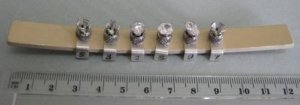Regular Guy
Ideal_Rock
- Joined
- Jul 6, 2004
- Messages
- 5,963
Dave, I don't know...I don't want to go into loop mode, as we've done before. But rather than responding to your follow up to my EEK face (it's not a smiley...), I'll fish out again your text, above, that I was motivated to respond to, and then post what will be one link, to a fairly long post, which you had initiated. All I typed into the search box was: Imagem. Some 300 posts come up, maxing out the system, and then on the first page of posts, I chose the one thread that was the most recent. On it, you do tend to be very reasonable, as you always are. I'll let anyone who wishes to review see if they also are curious why I go "eek" to what I've yellowed above...Date: 5/18/2009 5:05:31 PM
Author: oldminer
I don't think ImaGem has anything of a 'simlar problem' in its lighting model compared to Gemex. Both of these models are out in the public domain for examination and possibly there are others such as GIA's attempt with its Diamond Dock. Subjective grading is all well and good, but in these scientific days, we surely ought to be looking at objective grading and making the system well defined. Another subjective system on top of the existing color and clarity schemes will not make things much easier.







300x240.png)